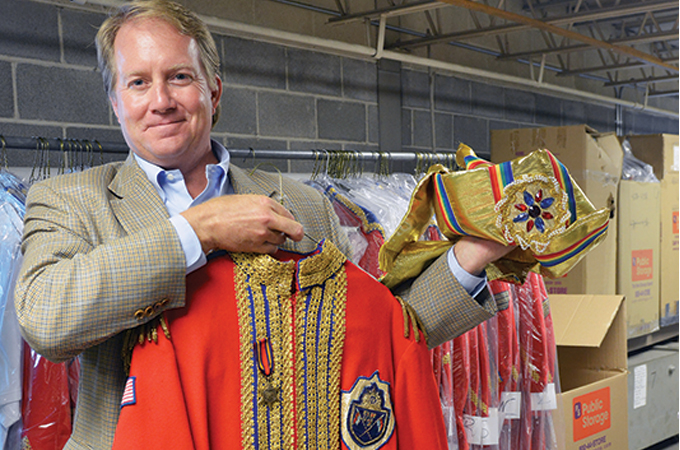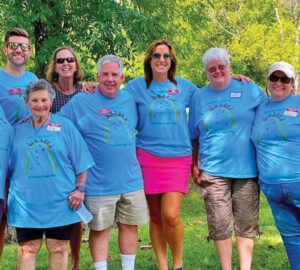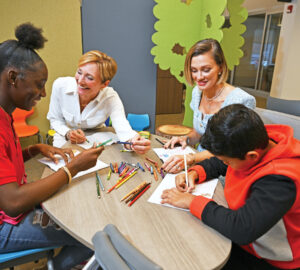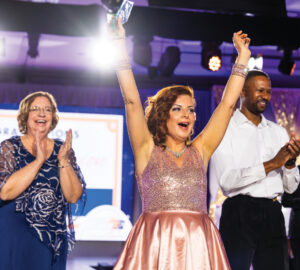Mention the words ‘veiled’ and ‘prophet’ together in St. Louis, and people here invariably talk about Fair St. Louis, the VP Parade and, of course, the annual Veiled Prophet Ball that takes place every December. The ball is widely called the city’s “premier social and civic event of the year,” which makes sense since it’s been taking place since 1878. That was before we had the Missouri Botanical Garden, St. Louis Country Club and even before Union Station opened!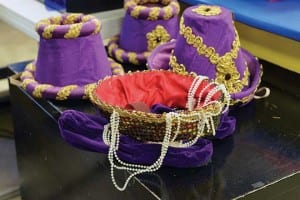
It stands to reason that such a prominent event with roughly 1,800 to 2,000 attendees would require a lot of planning, but what, exactly, does that mean? The editorial staff of Town&Style was invited ‘behind the scenes’ to visit the place where it all begins: where decisions are made, floats are stored, and hundreds of costumes are cleaned, sewn and waiting to be worn. The ball requires a full-time staff, year-round, dedicated to this one event, not to mention countless volunteer hours put in by VP members. After the big party, there is only a small break before discussions begin for next year’s event. A 25-member executive committee presides over 20 other committees, each with its own sub-committees, to manage every task down to the last detail: flowers for the centerpieces, flatware, linens, seating arrangements, timing and more. It is run like the complex production it is, ending with the dramatic finale that sees the year’s Queen of Love and Beauty crowned. Says VP spokesman Tom Cooke, “Like all good theater, there is a surprise ending!”
costumes
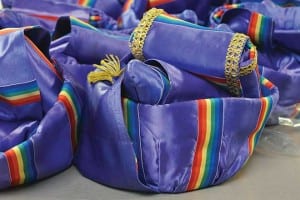 >>Even the costume departments at The Muny and The Fox don’t operate on the magnitude of the VP wardrobe division. In fact, local theaters have been known to borrow from the VP!
>>Even the costume departments at The Muny and The Fox don’t operate on the magnitude of the VP wardrobe division. In fact, local theaters have been known to borrow from the VP!
>>An entire level of the warehouse is dedicated to clothing for ball participants: one half for sewing, steaming and cleaning, and storage of supplies; the other half filled with tubs, boxes and racks full of costumes.
>>Upward of 2,000 costumes have been used in the parade over the years, and approximately 100 are used in any one year for the ball.
>>Some costumes are the same every year, like the Veiled Prophet and his court, and others change according to the year’s theme.
committees
>>Various committees are in charge of specific parts of the ball: building the set, writing the script for the evening’s events, welcoming guests, managing the holding rooms for escorts and maids, timing the girls down the runway, working with the florist, setting up and taking down, managing the elevator operation, arranging the Queen’s supper and more.
>>There is a friendly rivalry between the committees, which pushes everyone to do their best. They all hold gatherings throughout the year that serve as both celebrations and informational meetings.
>>Members can be involved in multiple committees if they choose.
logist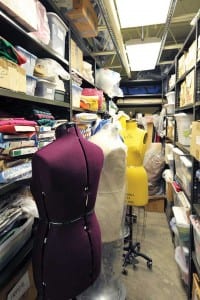 ics
ics
>>A theme is chosen in the summer, and everything is based on that, from centerpieces to costumes to the set. The VP tries to keep it closely connected to St. Louis, like this year’s theme: Celebrating 50 Years of the Arch.
>>Every year, a group of members rehearses with a professional choreographer to learn a dance related to the theme to perform at the ball.
>>Music is provided by a live orchestra that plays scores that date back hundreds of years. The Grand Oracle (also called the G.O. and the
Veiled Prophet) is always introduced to the chorus from Aida.
>>After the maids and court are presented, the party continues with dinner, dancing and eventually breakfast at 3 a.m. A committee times everything literally to the second, from each maid’s walk down the aisle to the quick 12-minute transformation of the ballroom into a space for a standing reception. Dinner is set to begin promptly at 11:30 p.m., and even with 1,200 guests, the food is expected to arrive at each table picture-perfect and hot!
>>There are approximately 115 dining tables decorated with large floral centerpieces that relate to the year’s theme.
Photos: Bill Barrett
Pictured: Ball chairman Pat Behan Jr.





